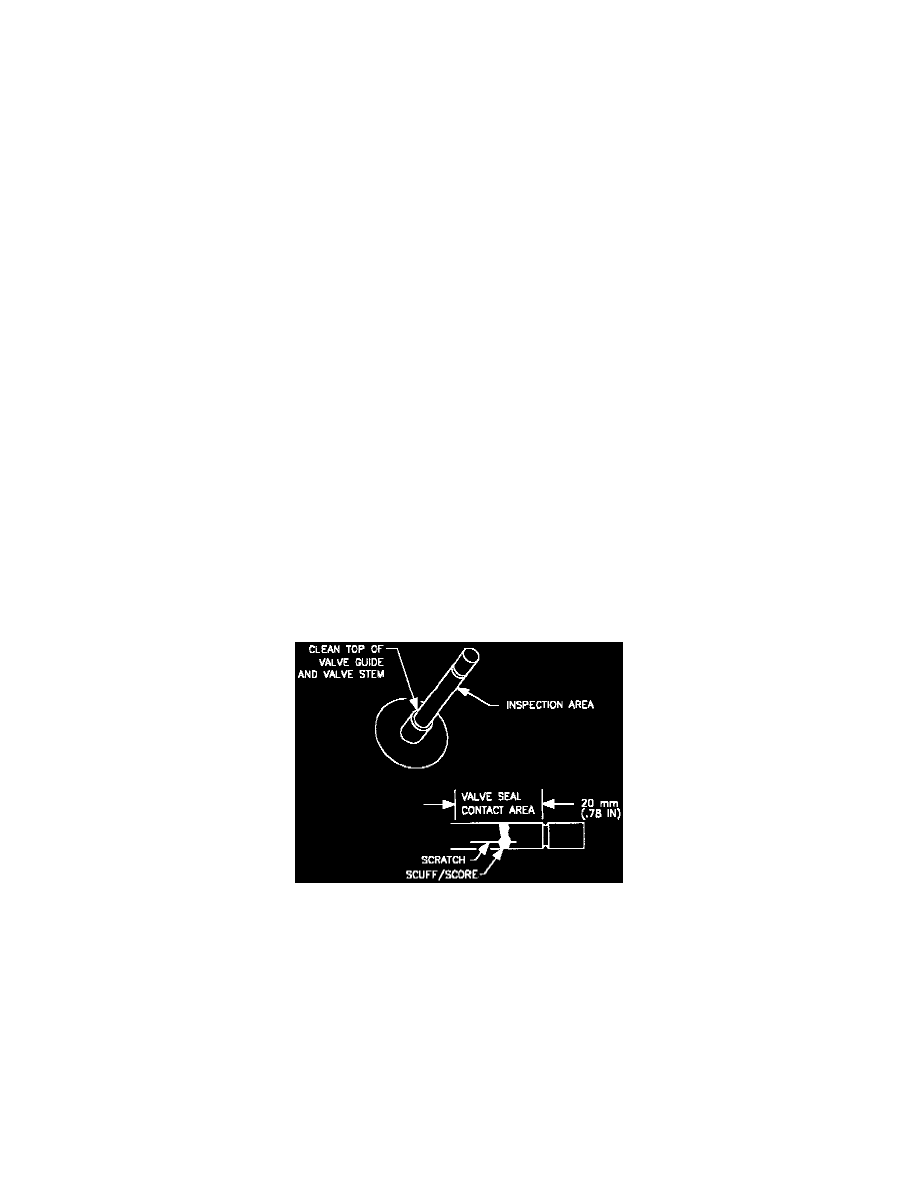SL L4-1.9L SOHC VIN 9 (1991)

"Engine Mechanical Service Manual."
SOHC ENGINE: WHEN THE CONCERN IS STUMBLE ON DECELERATION OR A MISFIRING CYLINDER WHILE DRIVING
^
Verify that the ignition system and engine controls are operating correctly. Refer to the "Electronic Engine Controls Service Manual" for proper test
procedures.
^
Using GM Top Engine Cleaner (or equivalent), remove carbon from the valves and cylinders per cleaner manufacturer's instructions.
^
Replace all valve seals.
VALVE SEAL REPLACEMENT O2
Valve seals can be replaced on both engines without removing the cylinder head or front cover. For service procedures, refer to the appropriate "Valve
Spring and Stem Seal Replacement In-Vehicle" section (depending on engine type), in the "Engine Mechanical Service Manual."
NOTE:
On the DOHC engine, always remove the hydraulic lifters immediately after each camshaft is removed. Removing the lifters from the cylinder head
immediately after camshaft removal prevents the lifters from being filled with oil or pumped up. If the lifters are not removed, the engine may have to
sit for several hours after the camshafts are installed, allowing the lifters to bleed down.
Four service tools are required to replace the valve stem seals.
^
SA9127E, Universal Pressure Test Kit. Adapters from the kit are used to pressurize the combustion chamber and hold the valves closed when
replacing the valve stem seals.
^
SA9122E, DOHC Camshaft Tool. This tool is used to hold camshafts in place on the DOHC engine when removing lifters, valve spring cap locks,
valve springs and valve stem seals.
NOTICE:
Do not use aftermarket valve spring remover and installation tools as lifter bore and/or valve stem damage may occur.
^
5A9124E, Universal Valve Step Spring Compressor. This tool is used to remove valve spring cap locks.
^
SA9102E, Valve Seal Removal Tool. This tool is used to remove and replace valve seals.
Once the valve stem seals are removed, inspect the valve stem for retainer lock damage to the valve stem during disassembly, scratches, scoring or
scuffing. If the valve stem is damaged, the cylinder head will have to be removed and the valve replaced.
If the condition is acceptable, the valve guide and stem must be cleaned and lubricated with engine oil before installing a new valve seal.
NOTICE:
The valve seal's sealing lip is usually damaged by the valve stem lock grooves when removed. If a seal is removed for any reason, the seal must be
discarded and a new one installed. The valve stem must be lubricated with clean engine oil prior to installing the valve seal. After the seal is installed,
the valve stem and seal must again be lubricated with clean engine oil.
After the new valve seals are installed, change the engine oil and filter, warm-up the engine and check for oil leaks. Ask the customer to continue
monitoring oil level, following the guidelines found in the "Maintenance Schedule" section labeled "Scheduled Maintenance Services" of tile "Owner's
Handbook." The Owner's Handbook recommends the oil level be checked at each fuel fill.
